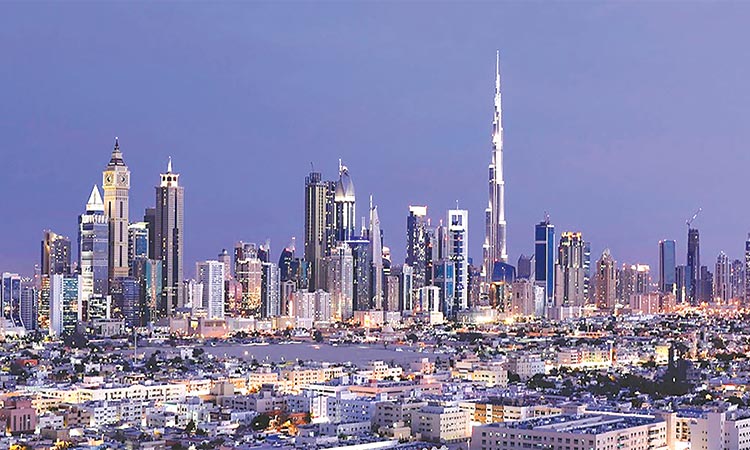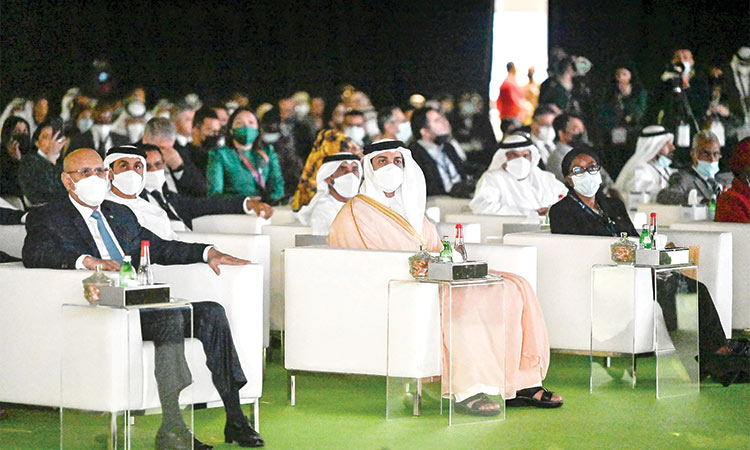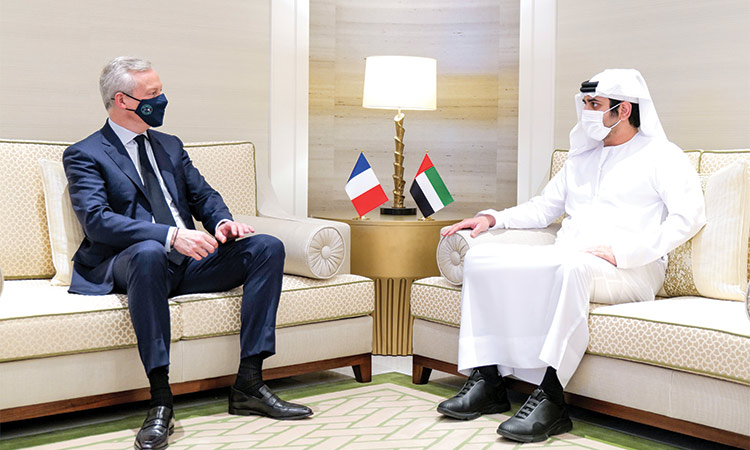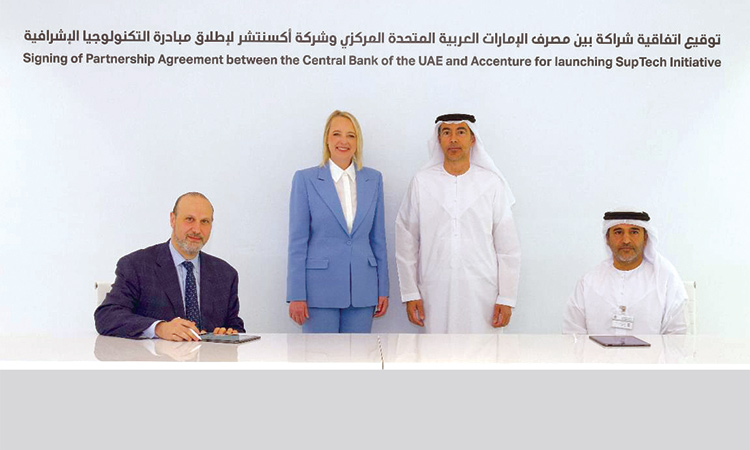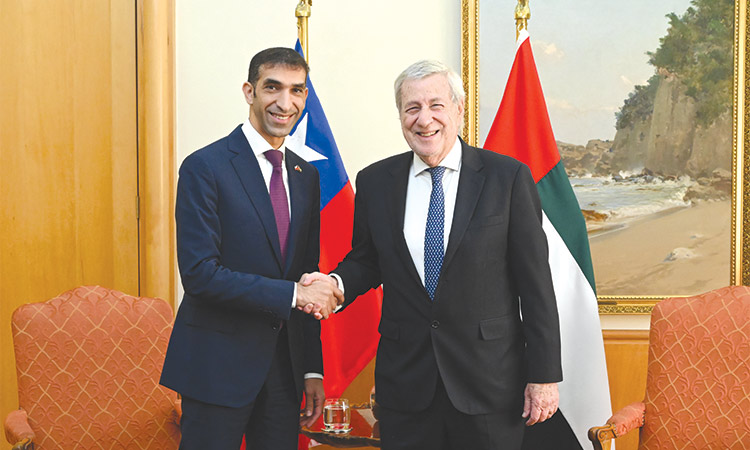Palm oil benefits discussed

Visitors at the Indonesian Pavilion in Expo 2020 Dubai. Kamal Kassim/ Gulf Today
World expositions have been held and experienced from 1851 with the present-day UK and specifically London as its first host. Since then, discussions, negotiations and exchanges in terms of knowledge, technology and all other inventions such as the telephone by Alexander Graham Bell, have been enjoyed by mankind, resulting in improving socio-economic conditions.
From the Indonesian Pavilion in the Opportunity District of the Expo 2020 Dubai, come chances for the world to know more about the oil palm and palm oil industry. Not only the industrial benefits developed from the fast-growing single stem tropical plant, tolerant to a wide range of soil types that produces black oily seeds; but also advantages relative to health and wellness.
For one, the Indonesian Oil Palm Society (MAKSI) and the Indonesian Palm Oil Board (DMSI) “are now in advance discussions with two companies form the UAE to open new opportunities for Indonesia’s palm oil product and derivatives to be distributed” to the Gulf, the Middle East and the rest of the world.
MAKSI is affiliated with the Indonesian Palm Oil Fund Management Agency (BPDPKS) under Jakarta’s Ministry of Finance.
DMSI is a non-profitable institution funded by the industry players and whose mission is to seek government support for the workers’ common interest, and continuous global competitiveness of the commodity. The positive news were derived from consequent email interviews with MAKSI chairman Dr. Ir. Darmono Taniwiryono and DMSI chairman Sahat Sinaga.
They were at the pavilion from Oct. 19 to 21 for lectures and fora, keynoted by Jakarta’s Ministry of Foreign Affairs Vice Minister Mahendra Siregar. Siregar pointed out that the industry “has been transformed” and has become “Indonesia’s commitment to climate change including greenhouse gas emission.”
In one of his lectures, Sinaga emphasised that “global commitment (to) climate change can be achieved by making palm oil processing technology affordable and suitable for smallholders who own more than 40 per cent of the oil palm plantations across Indonesia.”
He was hopeful that apart from the economic agreements, “collaborative research, socialisation of the benefits of planting oil palm, and producing vegetable oil from the plantations” are realised.
On the palm oil health and wellness benefits, Sinaga and Taniwiryono, who claimed that palm oil “has a balanced saturated and unsaturated fat with low Omega-6,” also enumerated the following:
The under-utilised flesh of the oil palm fruit contains high amount of beta-carotene (15 to 40 times the amount found in carrots), and high amount of Vitamin E (in the form of tocopherol and tocotrienol). Both are strong antioxidants, the ultimate scavenger for free radicals. It also contains carbohydrates, minerals and polyphenols. Unfortunately, being un-used and during the process of fat production, these high value products end up bleaching the earth and becoming effluent in the ponds of palm oil mills.
The by-product of the oil palm fruit called palm kernel expeller or palm kernel cake, commonly used to produce animal feed, contains significant amount of proteins.
Virgin Red Palm Oil flushed from the flesh part of the matured fruit which is a rich source for carotenes, tocopherol, tocotrienol, Co-Q10 and lycopene, has been a staple in West Africa since 5,000 years back. This helps prevent stunted growth in children.
In a face-to-face interview, Taniwiryono referred to the palm oil as the “healthy vegetable oil the world must know of and that synergistic partnership between smallholders and private plantations since the early 1980s has brought Indonesia to become the champion of vegetable oil in the world.”
He also said: “The world population is constantly growing and thus consequently, the need for food and energy is also growing. In 2019, palm oil share to the need of global consumption was accounted up to 34 per cent. To feed the world, Indonesia produces more than 50 million tons of palm oil. About 68 per cent (34 million) of it are exported.”
The Sept. 2021 edition of “The Palm Scribe,” quoting the Indonesian Palm Oil Association, reported that the total exports of Indonesian palm oil “rose by 34.35 per cent (as of July 2021) to 2.742 million tons while in value it rose by 32.32 per cent to reach $2.802 billion (Dhs10.3 billion). The top three world importers were China (522,200 tons), European Union (509,700 tons), and India (231,200 tons).
Taniwiryono related the oil palm originated from West Africa. It became an industry in Indonesia through the Dutch that occupied the islands for 172 years. The first exports were to Europe in 1911: “Thanks to the great technology contribution of European experts during the period of 1848 to 1957 in a way; so, the best management for land clearing, planting, harvesting and milling could be implemented appropriately until now.”
With the best practices and drive of the industry players to improve more, scientific research have become a part of the ecosystem. A result was the discovery of the bio wax paraffin, currently extensively utilised in batik production.
“For making batik, we now use the bio wax paraffin from palm oil as a substitute the crude oil-based paraffin. The bio wax paraffin is used to paint exceptional batik patterns. The innovation has resulted in the use of more sustainable resources while the waste produced easily decomposes back to nature,” Taniwiryno said.
Incidentally, batik-making is a favourite attraction at the pavilion and according to the Oct. 6, 2021 “IDN Financial” portal, the batik industry in Indonesia has so far generated $691.5 million (Dhs2.5 billion) export earnings from the entire 2020 to the first quarter of 2021 with 200,000 workers from 47,000 units across 101 regional centres.
